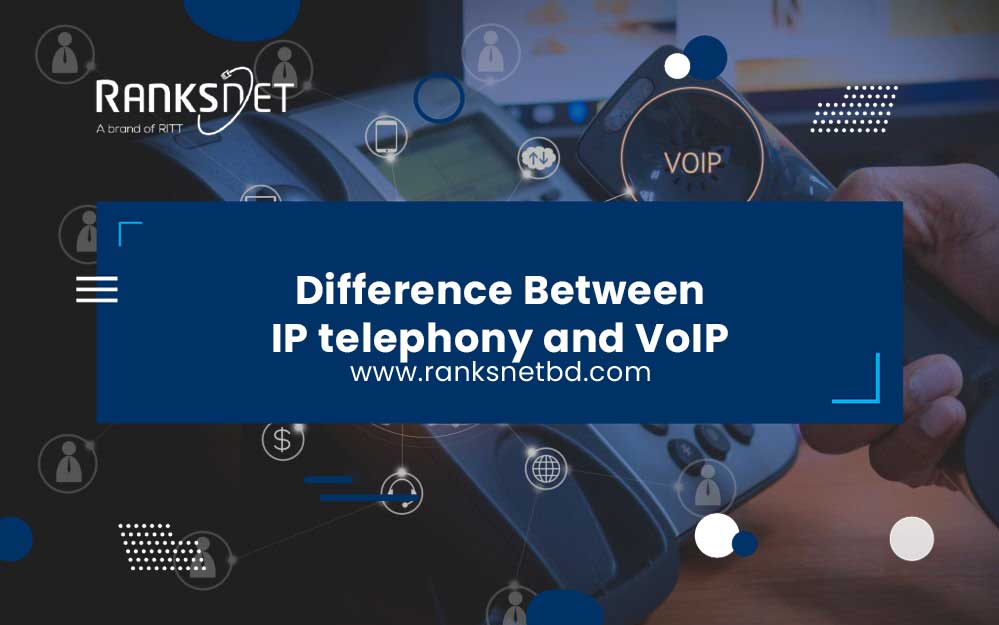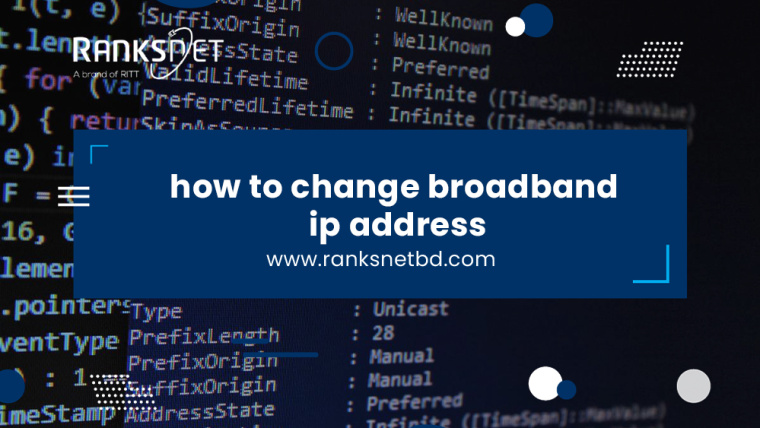Have you ever wondered how we can make voice calls over the internet, breaking through geographical barriers effortlessly these days?
Two related but distinct technologies make this possible:
IP telephony and Voice over Internet Protocol (VoIP). While they may seem similar, their unique characteristics set them apart.
This blog will uncover further the difference between IP telephony and VoIP, including definitions, scopes, reliance on networks, protocol standards, and interaction with other applications.
Let’s understand these complex concepts and deepen your appreciation for voice communication in the digital age.
| Overview of the Differences | |||
| Aspects | IP Telephony | VoIP | |
| Definitions | Refers to using IP networks for voice calls, integrating with other IP-based applications | involves transmitting voice packets over IP networks | |
| Scopes | Has a broader scope, including private networks | Focuses on public internet-based voice communication | |
| Network Dependencies | Can use private networks for enhanced security and quality | Relies on the public internet | |
| Protocol Standards | Uses various protocols like SIP, H.323, and MGCP | Primarily relies on SIP | |
| Application Integration | Integrates with applications like video conferencing | Focuses on voice communication | |
Understanding the Concepts and Technologies
IP Telephony and VoIP involve voice communication over IP networks, but their focus and technologies differ.
Get a better idea:
What is IP Telephony?
IP Telephony is a broad concept of using IP networks, such as the Internet, to transmit voice calls.
It involves a range of technologies that contain voice communication over IP-based networks.
IP telephony includes the infrastructure, systems, and protocols for transmitting voice signals over IP networks. It has various features: call setup, routing, control, and media transport.
IP telephony can be implemented within private networks, enabling organizations to have internal telephone systems.
Also, it can integrate voice services with other IP-based applications like video conferencing and collaboration tools.
What is VoIP?
Specifically, VoIP refers to the technology when you do voice communication over the Internet or any IP network.
It is a subset of IP telephony and focuses on the actual transmission of voice packets.
VoIP converts analog voice signals into digital packets, which are then transmitted over IP networks.
It uses protocols like the Session Initiation Protocol (SIP) for call setup, signaling, and control.
Curious about SIP? Keep reading.
VoIP relies on the underlying IP infrastructure, routers, and switches. It can use the public internet or private IP networks for voice transmission.
Usually, VoIP makes voice calls over the internet, enabling cost-effective long-distance and international calls.
1. Applications of IP Telephony and VoIP
IP Telephony has a wide scope of technologies and applications, going beyond the transmission of voice calls.
It includes voice communication within private networks, such as corporate telephone systems.
IP telephony allows organizations to establish internal telephone systems through which businesses ensure seamless communication.
It can integrate with other IP-based applications, such as video conferencing, instant messaging, and collaboration tools.
This integration means a unified communication experience where voice services combine seamlessly with other communication channels.
On the other hand, VoIP has a narrower scope, primarily focusing on transmitting voice packets over IP networks.
Generally, VoIP is associated with making voice calls over the public internet or utilizing public VoIP service providers.
It is widely used for personal and business communication, letting individuals and organizations make cost-effective long-distance and international calls using IP networks.
VoIP services often offer additional features such as call forwarding, voicemail, and call recording.
2. Network Dependency: IP Telephony’s Control and VoIP’s Internet Reliance
IP Telephony provides the flexibility to be implemented within private networks. This grants organizations to have control over their voice communication infrastructure.
It can operate independently of the public internet by utilizing dedicated IP networks or virtual private networks (VPNs).
This independence offers benefits like better security, improved quality of service, and the ability to prioritize voice traffic over other data transmissions within the private network.
IP telephony within private networks is particularly useful for businesses that require secure and reliable voice communication within their internal systems.
In contrast, VoIP relies on public IP networks, primarily the Internet, for transmitting voice packets. It depends on the underlying IP infrastructure and the internet connection quality.
Voice packets are sent over the public internet, which introduces the potential for varying network conditions, such as latency, packet loss, and jitter.
The internet connection quality can directly impact the quality of voice calls in a VoIP system.
However, advancements in network technologies and the widespread availability of high-speed internet connections have significantly improved the reliability and quality of VoIP services.
While IP telephony offers greater control and independence by utilizing private networks, VoIP uses the public internet for its wide reach and accessibility.
The network dependency of VoIP requires careful consideration of factors such as internet service providers, network congestion, and network security measures to ensure reliable and secure voice communication.
3. Different Protocols Standards that Power IP Telephony and VoIP
IP Telephony has diverse protocols that facilitate call setup, signaling, and control within IP-based telephony systems.
Some commonly used protocols in IP telephony include the Session Initiation Protocol (SIP), H.323, and Media Gateway Control Protocol (MGCP).
These protocols play crucial roles in establishing and managing voice communication sessions.
Want to know about SIP, H.323, and MGCP? Here you go—
- SIP is one of the predominant protocols in IP telephony. It is a text-based protocol that initiates, modifies, and terminates multimedia sessions, including voice calls, video conferences, and instant messaging. SIP provides flexibility and interoperability by allowing devices and applications from different vendors to communicate with each other seamlessly.
- H.323 is another protocol used in IP telephony, particularly in older systems. It provides a comprehensive suite of protocols for multimedia communication over IP networks. H.323 supports various multimedia services, including voice, video, and data, and ensures interoperability between devices and networks.
- MGCP is a signaling protocol often used in IP telephony for controlling media gateways, which interface between IP networks and traditional analog or digital telephony networks. MGCP allows centralized control of media gateways from a call control server, enabling efficient call management and routing.
And in VoIP, the primary call signaling and control protocol is SIP. VoIP systems heavily rely on SIP for establishing and managing voice communication sessions.
Once again, SIP initiates, terminates, and modifies VoIP calls and works with other protocols for a smooth communication experience.
While SIP is the predominant protocol in VoIP, other protocols like H.323 and MGCP can also be used, particularly in legacy systems or specific network configurations.
These protocols provide alternatives for call signaling and control in VoIP deployments.
4. Integration with Other IP-based Applications
IP Telephony can integrate with a wide range of IP-based applications, expanding the capabilities and functionality of voice communication.
IP telephony systems can seamlessly integrate with applications such as video conferencing, unified communications platforms, instant messaging, and collaboration tools.
This integration gives users a unified communication experience, where voice services can be combined with other communication channels, facilitating efficient and collaborative workflows.
For example, within an IP telephony system, users can initiate a voice call and seamlessly transition to a video conference or share documents in real time, enhancing organizational productivity and communication.
Conversely, VoIP primarily focuses on voice communication and doesn’t inherently involve integration with other applications or services.
VoIP technology is designed to transmit voice packets over IP networks, typically using the public internet or public VoIP service providers.
While VoIP can be used with other applications, such as softphone applications or call center software, the core focus remains on voice communication.
The integration capabilities of IP telephony provide organizations with the flexibility to create unified and integrated communication environments.
By combining voice services with other IP-based applications, businesses can streamline communication processes, enhance collaboration, and improve efficiency.
Although primarily focused on voice communication, VoIP can still be integrated with specific applications or services to meet specific needs, such as call center solutions or voice-enabled customer relationship management (CRM) systems.
Summarizing the Difference between IP Telephony and VoIP
IP telephony and VoIP are two technologies that facilitate voice communication over IP networks.
IP telephony utilizes IP networks, including the internet, to enable voice calls and can integrate with other applications.
On the other hand, VoIP is specifically designed for voice communication over the Internet or IP networks and is generally utilized for affordable long-distance calls.
IP telephony offers control within private networks, while VoIP depends on the public internet.
Both technologies rely on protocols like SIP and have the potential to integrate with various applications.
These communication advancements have transformed how we connect with others, overcoming barriers and ensuring efficient voice calls over IP networks.


